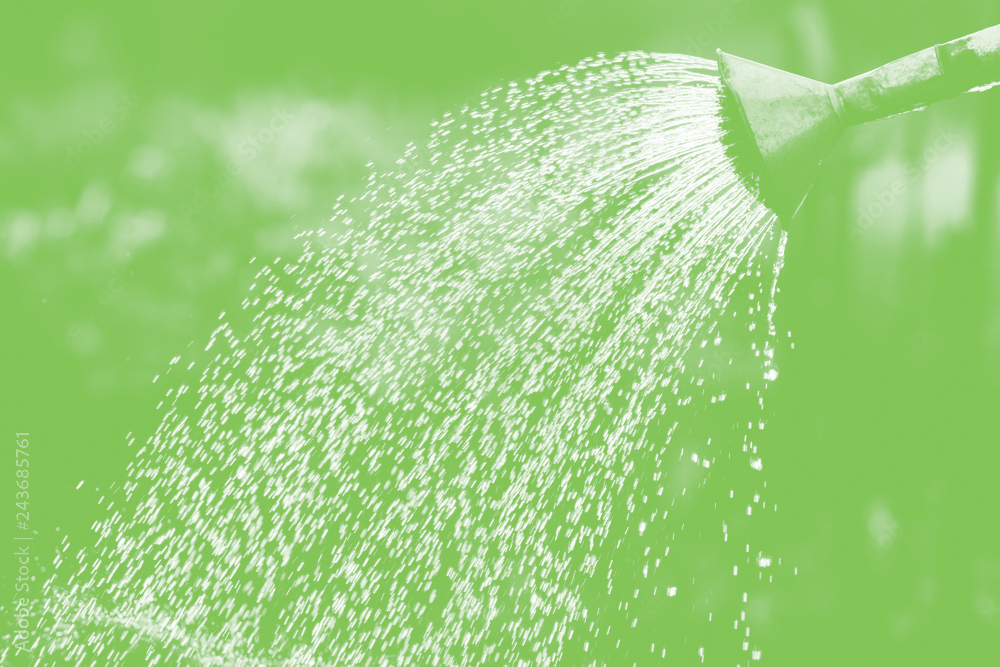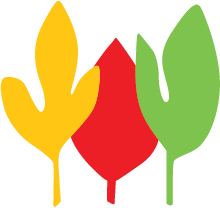
Common Houseplant Problems:
The Winter Months
Striking a balance between natural light, air temperature, humidity, and soil moisture are the top 4 critical factors to ensure healthy houseplants. A change of season will affect all four critical factors for houseplant health, so remember when one changes the others must follow to maintain balance.
Striking a balance between natural light, air temperature, humidity, and soil moisture are the top 4 critical factors to ensure healthy houseplants. A change of season will affect all four critical factors for houseplant health, so remember when one changes the others must follow to maintain balance.
The winter months can often be the most challenging time to achieve this balance. The most common problems we see in winter are not insect or disease-related, but are caused by their care and/or environment.
These are the top five problems we see most often during the winter:
Overwatering - Overwatering is very common in winter because we often forget to adjust the frequency and amount of water we give our plants. Just like lighting requirements, it is important to know what your plant needs in order to get it on its preferred watering routine.
Prescribing an exact watering routine is kind of like predicting the weather. Every home is different and conditions change with the seasons, but in general, plants use less water in the winter than they do during the other seasons. Most often, you should let the top inch dry out before watering again. The heat running more on cold days, fans moving, a stretch of cloudy vs sunny days, or more humid rooms, like the bathroom and kitchen, will affect how quickly plants dry out.
Poor Placement - Placement is extremely important during the winter months. The most common placement issues we see are plants with no or low natural light, plants that have never been rotated/turned, and plants that have been placed too close to a window, frequently used exterior doors, heat vents, or return vents.
Assessing how much light comes through your windows can be very deceiving to the naked eye. New, energy-efficient windows block out a large portion of the UV spectrum used by the plant; therefore, the distance the plant is from the window as well as the direction the window faces are very important factors to consider when placing your plant. South and west-facing windows typically receive the strongest light, but overhangs, blinds/curtains, and large shade trees outside can alter this. Not all plants need the same amount of light and some are more adaptable than others, so when deciding where your plant should go it is important to know what light conditions your plant needs. Compared to plants that stay inside year-round, plants that go outside in the spring, summer, and fall, can typically handle a lower light environment inside during the winter than usually required during the growing season.
It is important to turn or rotate your plants periodically to face the strongest light source so they will grow evenly on all sides. It is also important to keep leaves wiped clean. The dust settled on leaves can affect the amount of light the plant receives, thus affecting its ability to produce food (aka photosynthesis).
Cold damage can occur on plants placed too close to a window or exterior door. Cold damage typically looks like brown or black streaking and/or dieback on the tips of the plant. When this is the case, move the plant to a warmer interior location and monitor its progress. This is not typically fatal but can cause damage. Plants placed too close to an air vent or return vent tend to be much harder to keep properly watered, so if they are close to these vents make sure to keep a close eye on their watering needs.
Matching the Season with Temperature and Humidity - Warm interior air temperature and low humidity are very common winter problems for plants. This can cause brown or crisp edges on leaves and even awaken dormant pests. This is not to say that you need to use humidifiers in your home during the winter, because that can actually be more of a problem than a solution.
Most houseplants are native to areas where they have a cooler, less humid “winter” season which is an important time for the plant because it allows them to slow their growth and rest during a period when light levels are lower. We run the AC in summer keeping it cool inside and the heat in winter so that we can be nice and warm, but if we want our plants to be happy we should try to mimic their natural growing environment/temperature as much as possible, which is the opposite of what we just described.
To help keep your houseplants on track, consider raising the thermostat a bit in the summer or, even better, take them outside. If you can’t take your houseplants outside for the summer, this is the season when a humidifier could be useful, but be warned as creating enough humidity inside your home to make a difference to the plant can cause major maintenance issues for your home, including mold, and be very uncomfortable for you.
Using a humidity tray can be moderately helpful for plants that are more susceptible to a drier environment. It is also especially important to note that misting plants does not increase the humidity and can cause or exaggerate foliar disease issues.
60°F is an ideal winter temperature for most houseplants. The easiest way to do this and also keep yourself comfortable is to adjust the temperature whenever you are away from home. This will not only save you money on your utility bill, but it will also make your plants very happy.
Acknowledging a Plant’s Natural Aging Process - Plants are living things and age naturally. As they increase in age this causes them to grow more slowly. Their shape can also change and their leaves may become dull as they mature. The winter season can sometimes intensify these age-related changes. We have found that this is one of the hardest things for plant parents to accept because it isn’t something they can change like watering or light levels.
Plants age just like us, there are things that you can do to help them live a longer life, but aging is inevitable.
Proper Care and Maintenance in the Summer - Giving your plant their ideal environment and performing needed maintenance, like repotting, fertilizing, pruning, and treating any disease or pest problems, in summer will go a long way to help plants during the winter months. Winter should be their time of rest so we don’t want to do anything that may encourage active growth.
Feeling a little overwhelmed? Use this mantra to help keep you and your plants on track…Winter is considered a time to survive and summer is a time to grow and thrive.
If you are observing a problem with your houseplant, ask yourself
“Are my four critical factors in balance for this plant given the season - natural light level, air temperature, soil moisture, and humidity?”.
Bringing these factors back into balance with the time of year and allowing plants to experience more natural seasons throughout the year will dramatically enhance your plants’ ability to navigate and survive the winter months.
As always, our team is here to help. Send us an email with your questions or concerns.

